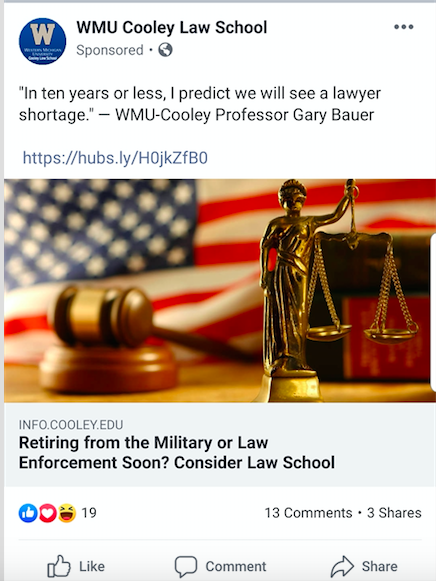(Photo by Jonathan Daniel/Getty Images)
The artist Prince, with his eyes sad and gaze unaverted, peers out from the confines of a stark and moving photograph, inviting the viewer to commiserate, to share his pain. This 1981 work, created by Lynn Goldsmith, captured Prince at his most compelling and is now at the center of a lawsuit between Goldsmith and the Andy Warhol Foundation. Had Prince knew the distress this photograph would cause another artist decades after its taking, his countenance would have been even more dour.
In 1984, Vanity Fair licensed the photograph from Goldsmith for use as “source art” to be adapted by Andy Warhol as part of one of his signature derivatives. This derivative ran in Vanity Fair’s November issue and included a credit to Goldsmith for the “source art” used by Warhol.
Warhol also used the Goldsmith photograph as “source art” for a series of silk screens and other pieces, most of which were sold off for exorbitant sums. When Prince passed in 2016, Vanity Fair republished the Goldsmith/Warhol work online. This republication was so successful that Vanity Fair used the work as the cover image for a new publication it created and sold commemorating Prince’s life. In this new publication, Goldsmith’s credit was removed from the work. And Vanity Fair paid a license fee only to the Andy Warhol Foundation (which by that time controlled Warhol’s copyrights).
When she caught wind of the above, Goldsmith contacted the AWF and noted that the new publication incorporates both her and Warhol’s creative material and that both authors had previously been credited and compensated. This had been acknowledged expressly in the Vanity Fair article and did not seem to be a disputed issue. Yet, she was rebuffed and then sued by the AWF.
The AWF sought declaratory relief in the form of a court order finding the licensing and exploitation without consent of Goldsmith’s material to be “fair use” and thus not infringement.
As readers of this column know, this writer is no fan of the amorphous and raggedly applied “fair use” doctrine, which has, over the years, transitioned from focusing on the commercial impact of the disputed use to whether that use is “transformative.” And, along the way, it has swallowed up the once exclusive right of an artist to create derivative works from her material.
This case illustrates why that transition is so problematic. The now all-important “transformative” analysis in Goldsmith’s case ventured into the mire of the metaphysical, an always dicey undertaking. The court homed in on the fact that Goldsmith’s photograph illustrates that Prince is “not a comfortable person” and is instead a “vulnerable human being.” The court then notes “in contrast,” that Warhol’s work features a “flatter” depiction that “transforms” Prince “from a vulnerable, uncomfortable person to an iconic, larger-than-life figure.” Through this flattening, the court concludes that the “humanity” was removed from Goldsmith’s photograph and the work transformed in the process.
Now, the above may be true, and Judge Koeltl, who wrote this decision, is a very sharp and astute jurist with a firm grasp on copyright principles, but I cannot make heads or tails out of what this passage means or how the “removal of humanity” fits within the fair use factors codified at Section 107 of the Copyright Act. The “fair use” test has now become so bloated and convoluted that nobody can find their way out.
Surely, if you trace a photograph on paper it is going to look flatter. And the bit about how the flattening “transforms” Prince from vulnerable to iconic does little to distract from the fact that this was a simple embellished copy. The true crux of the court’s analysis is revealed as almost an aside at the end of the “transformative” analysis, when the court states that the work basically looks like (or is “recognizable” as) a Warhol so should be protected as a Warhol.
Yet, the fact that a work is “recognizable” as coming from one artist is irrelevant to whether the use is a “fair use,” at least from a statutory standpoint. Indeed, when an artist of outsized fame like Warhol is involved in a “fair use” review, the process is further distorted as courts tend to look beyond the four corners of the artwork at issue to consider the fame of the artist. This, too, is not contemplated by the statute.
The Goldsmith “fair use” analysis got so muddled that the court even trotted out Justice Stewart’s “I know it when I see it” obscenity test, which is certainly of no assistance to artists and not the direction the “fair use” test should be heading. In the end, the court found that the work looks like a Warhol and should thus be protected by fair use. This ruling would seem to indicate that a famous artist with a known aesthetic can more easily claim fair use than a lesser-known artist, which is also not within the spirit of the Copyright Act.
This decision is also another nail in the coffin of one of the statutorily guaranteed exclusive rights that Congress granted to authors under the Copyright Act in an effort to incentivize the creation of artistic works. R.I.P, we can now mutter, at least in the Second Circuit, to the exclusive right to create derivative works.
17 USC 106(2) of the Copyright Act still provides an author with the “exclusive right” to “prepare derivative works based upon the copyrighted work[.]” And a “derivative” is still defined as “a work based upon one or more preexisting works,” such as those that “recast, transformed, or adapted” the prior work. Indeed, a “work consisting of editorial revisions, annotations, elaborations, or other modifications which, as a whole, represent an original work of authorship,” is still an archetypal “derivative work.”
But, this exclusive right was jettisoned here despite the fact that Warhol’s Prince works are certainly an “elaboration on” or “modification of” Goldsmith’s photograph. Indeed, as the Copyright Act’s legislative history makes clear, the infringing work will “incorporate a portion of the copyrighted work in some form.” That is exactly what Warhol’s Prince work does — incorporates a portion (and a large one at that) of Goldsmith’s work. Yet, the AWF has been adjudged free to exploit and monetize Warhol’s elaboration on Goldsmith’s work without any compensation whatsoever to Goldsmith.
An illuminating way to look at the equities here is to imagine Goldsmith and Warhol in the same studio back in the 1980s, with Goldsmith creating the photograph and then handing it to Warhol to trace and flatten and color. Had that happened, it could not be disputed that the work was a joint work and each artist would thus receive 50 percent of any profits from the work (or contracted for a different split of the profits). But, because Warhol simply appropriated the work without collaborating with Goldsmith, he (or his foundation, rather) may exploit and monetize the derivative without any compensation to Goldsmith. This does not seem to further the purpose of the Copyright Act.
While the AWF should be able to profit from the marketing and sale of Warhol’s Prince works, which are undoubtedly alluring in their own right, Goldsmith, as the creator of the source for those works, should not be left out in the cold. As a staunch advocate for artists’ rights, Prince is likely to be rolling over in his beret given this decision, which will hopefully be challenged on appeal.
 Scott Alan Burroughs, Esq. practices with Doniger / Burroughs, an art law firm based in Venice, California. He represents artists and content creators of all stripes and writes and speaks regularly on copyright issues. He can be reached at scott@copyrightLA.com, and you can follow his law firm on Instagram: @veniceartlaw.
Scott Alan Burroughs, Esq. practices with Doniger / Burroughs, an art law firm based in Venice, California. He represents artists and content creators of all stripes and writes and speaks regularly on copyright issues. He can be reached at scott@copyrightLA.com, and you can follow his law firm on Instagram: @veniceartlaw.






 If that doesn’t seem like it comports with the realities of the legal profession as it exists in 2019, well, you’re onto something. The
If that doesn’t seem like it comports with the realities of the legal profession as it exists in 2019, well, you’re onto something. The  Kathryn Rubino is a Senior Editor at Above the Law, and host of
Kathryn Rubino is a Senior Editor at Above the Law, and host of 
 Ellen Trachman is the Managing Attorney of
Ellen Trachman is the Managing Attorney of 




 Jordan Rothman is the Managing Attorney of
Jordan Rothman is the Managing Attorney of 



